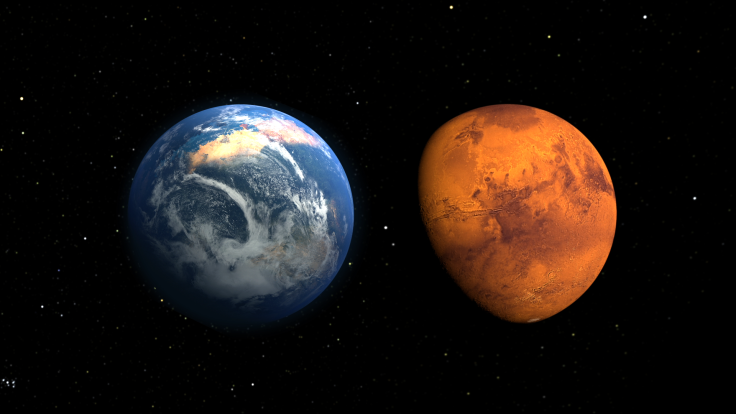Mars Atmosphere Has Metal, NASA’s MAVEN Spacecraft Finds

It is now well-known that Mars once had liquid water on its surface, but that was sometime between 4.2 billion and 3.7 billion years ago. What is not as well understood is exactly how the surface of the red planet transformed from a warm place to the cold desert it is now. But scientists are working hard to understand that.
And toward that end, NASA’s MAVEN spacecraft, which has been investigating the upper atmosphere and ionosphere of Mars since September 2014, has made an interesting discovery: the presence of electrically charged metal atoms. These metal ions can shed light on previously unknown activity in the poorly understood Martian ionosphere.
A paper based on new results from MAVEN was published Monday in the journal Geophysical Research Letters. Titled “Unique, non-Earthlike, meteoritic ion behavior in upper atmosphere of Mars,” the paper says of the sodium, magnesium and iron ions: “These metal ion distributions are drastically different from those at Earth because the terrestrial ions are strongly affected by the Earth's intrinsic magnetic field, whereas Mars has no such field. Unique Mars metal ion structures have been encountered that have no counterpart in the Earth's ionosphere.”
Read: Potatoes Can Grow Under Martian Conditions
Lead author of the paper, Joseph Grebowsky of NASA's Goddard Space Flight Center in Greenbelt, Maryland, said in a statement: “MAVEN has made the first direct detection of the permanent presence of metal ions in the ionosphere of a planet other than Earth. Because metallic ions have long lifetimes and are transported far from their region of origin by neutral winds and electric fields, they can be used to infer motion in the ionosphere, similar to the way we use a lofted leaf to reveal which way the wind is blowing.”

Mars has an almost non-existent atmosphere, and therefore no heat is trapped by the planet. Understanding the activity of the ionosphere could help explain why the Martian atmosphere is being lost to space.
Based on indirect evidence, scientists think other planets in the solar system also have ionospheres, but this is the first instance of direct detection of this charged layer on a planet other than Earth. MAVEN made the observation using its Neutral Gas and Ion Mass Spectrometer instrument over two years.
Studying the Martian ionosphere, which is very different from that on Earth, would also improve the understanding of phenomena like formation and behavior of high-altitude clouds.
© Copyright IBTimes 2025. All rights reserved.





















